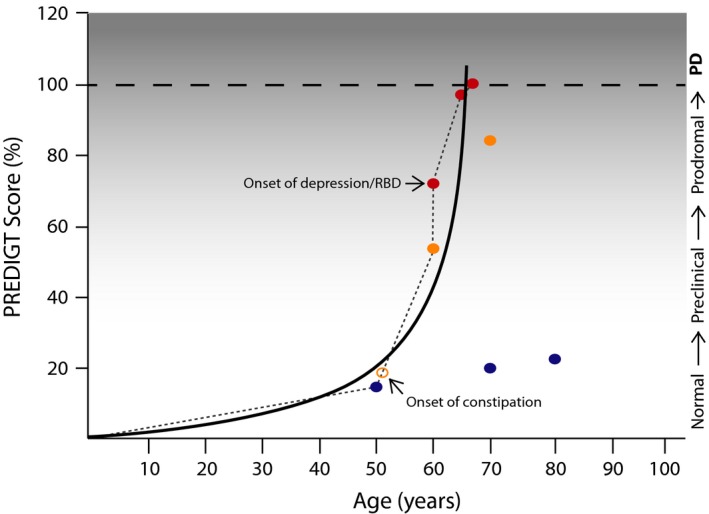Figure 3.

Graphic representation of cumulative incidence rate for PD in a 50‐year‐old man. The prediction of Parkinson disease (PD) in a 50‐year‐old smoker is depicted (see scenario #6 in the text). Blue dots: Incidence rates are calculated based on the individual's current smoking status, a confirmed, positive family history of PD, the inferred tissue response(s), sex/gender, and age: PREDIGT scores of 15% at age 50; 21% at age 70; and 24% at age 80 years are shown. Yellow dots: The calculated cumulative incidence rate for PD has changed after cessation of smoking at age 50 years and the onset of constipation shortly thereafter (open yellow circle): PREDIGT scores, 54% at age 60, and 84% at age 70 years. Red dots: The diagnosis of new‐onset depression (or a REM sleep behaviour disorder; RBD) at age 60 years changes the cumulative incidence rate for PD, as represented by a PREDIGT score of 72% at age 60, of 97.5% at age 65, and the projected diagnosis of typical PD by 66.67 years (score, 100%). The course of disease development (solid black line) was inferred based on PREDIGT scores generated at multiple time points. Clinical stages are as described in the text and in Fig. 1.
